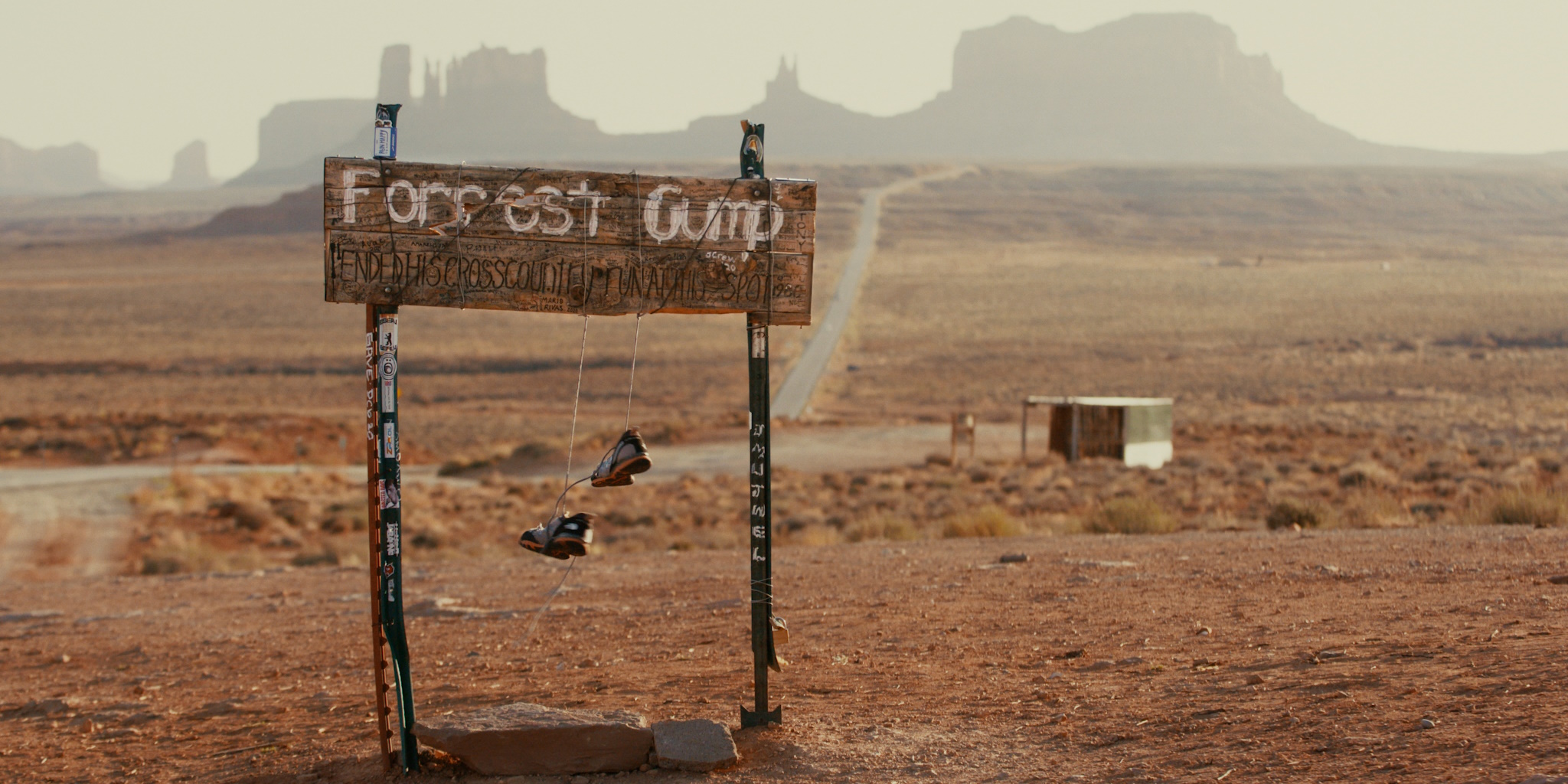For its first ten minutes, Alexandre O. Philippe’s documentary The Taking waxes poetic about the natural beauty and symbolic power of Monument Valley, Ariz. Owing primarily to their conspicuous appearance in seven John Ford-directed Westerns between 1939-64, the area’s distinctive sandstone buttes and the surrounding desert valley have become synonymous with the American West in the popular imagination. However, even if the viewer goes into The Taking blind, it’s clear that Philippe and his diverse group of narrators are winding up for a great big “BUT…”, a qualification that will deflate the awed tone of those opening minutes.
While most Americans might associate this famous landscape with John Wayne, the Roadrunner, or Clark Griswold’s ruinous odyssey to Wally World, the Diné (Navajo) people who have inhabited the region for over six centuries regard the valley as sacred. The buttes themselves lie within the Navajo Nation Reservation, and many of the Native cast and stunt people for Ford’s Monument Valley productions were Diné. (Never mind that they were portraying Apache, Cheyenne, or Comanche characters. Savages were savages in Golden Era Hollywood).
Of course, as the film’s Native narrators articulate with barely concealed emotion, the national myth of the West that is reinforced by the valley’s innumerable cinematic depictions ultimately serves a bloody and rapacious colonial agenda. However, The Taking is attempting something more ambitious and slippery than a mere statement of the obvious. (Newsflash: Most of John Ford’s Westerns were steeped in anti-Native racism, and economic and cultural theft of Native peoples is still ongoing.) Philippe’s documentary looks at Monument Valley through a somewhat loftier cultural and sociological lens, one focused on the insidious alchemy of places, images, and ideas. Unfortunately, these musings never really crystallize into a robust thesis.
Philippe (The People vs. George Lucas, 78/32: Hitchcock’s Shower Scene, Leap of Faith: William Friedkin on the Exorcist) has established himself as one of documentary cinema’s most adept purveyors of movies about the movies. The Taking is his most pointedly political work, but it’s also one of his weaker efforts, partly due to his methods and partly due to abstract nature of its core ideas. The film features voice-over narration from nine different critics, historians, and academics – including such figures as British pop cultural writer Christopher Frayling and Diné American Studies professor Jennifer Nez Denetdale – but it doesn’t identify these speakers until the closing credits. The viewer is therefore left with a jumble of voices whose authority is derived primarily from how lyrically they describe their cinematic memories of Monument Valley, or how sharply they convey their disapproval of American colonialism and its propagandistic handmaiden, Hollywood.
The Taking is primarily concerned with cinema, so it’s understandable – if a little frustrating – that the documentary provides scant information about Monument Valley itself. The viewer learns virtually nothing about this eons-ancient geological feature, or about the pre- or post-colonial history of the Diné people and their relationship to the land. (The film asserts that the valley is “sacred” to the Navajo Nation but doesn’t elaborate further.) What Philippe does do quite effectively is illustrate the ubiquity of Monument Valley in popular culture, showing how those iconic buttes pop up not just in Ford Westerns, but in innumerable films ranging from The Eiger Sanction (1975) to An American Tail: Fievel Goes West (1991) to Transformers: Age of Extinction (2014). The landscape acts as a kind of shorthand: Here is the West. Here is America.
This is admittedly eye-opening when assembled into a feature-length super-cut, revealing a bit of geographic and ideological flimflam that’s been in front of our noses all along. At times, the film scholarship gets a little sloppy: It seems disingenuous to conflate Wayne’s Monument Valley-backed introductions in Stagecoach (1939) and The Searchers (1956) without acknowledging how distinct gold-hearted outlaw the Ringo Kid is from embittered old Ethan Edwards. Still, there are plenty of enlightening and amusing details, such as the revelation that Ford’s production designers placed saguaro cacti in the valley, bolstering the plant’s popular association with the Southwest. (The cacti are actually native to the Sonoran Desert, hundreds of miles to the southwest.) There are also some deadpan-hilarious quotes from Ford himself, evidently clipped from an on-location interview with Peter Bogdanovich. At times The Taking ranges far afield from the shadow of Ford to talk broader film theory topics. It might be the first documentary to juxtapose clips from the 1929 experimental Soviet masterpiece Man with a Movie Camera and the 1984 Tom Hanks sex comedy Bachelor Party.
The Taking advances an intriguing framework for thinking about iconic natural places like Monument Valley, one in which our desire to travel to (and photograph) such locales would not exist without a hefty résumé of film and television appearances. It’s not just beautiful, Instagram-worthy desert scenery; it’s the exact section of highway from that one scene in Forrest Gump! This feedback loop – the image leading to desire leading to travel leading to more images – is a fascinating, quasi-colonial cultural phenomenon, but The Taking is merely pointing it out rather than offering a detailed critique or remedy. Fair enough: Philippe’s feature is more ruminative video essay than sociopolitical call-to-action. However, the result is a film that just sort of peters out, musing skeptically on the likelihood that the Western myth embodied in Monument Valley can ever be meaningfully deconstructed.
The Taking screens at 7:30 p.m. on Thursday, July 13 at the Webster University Film Series.




